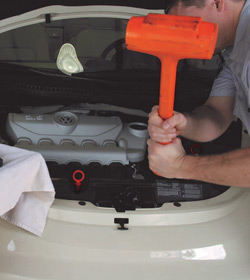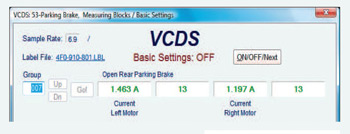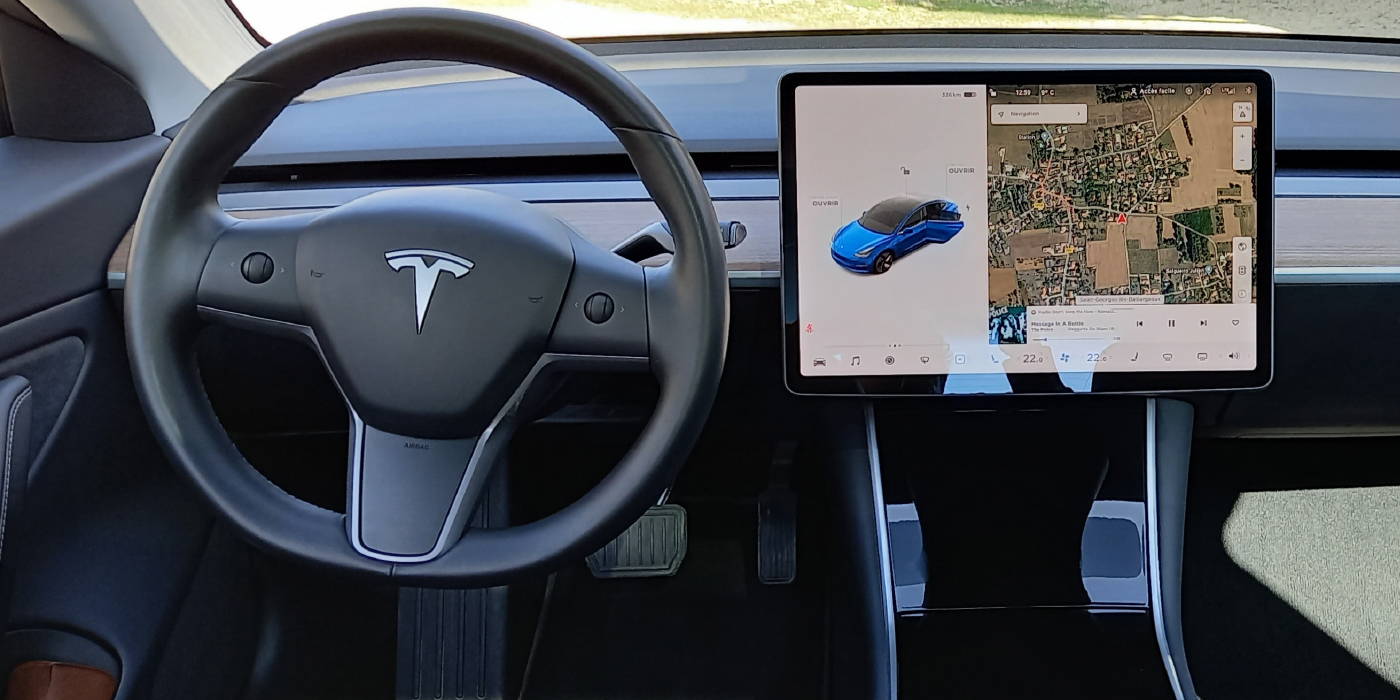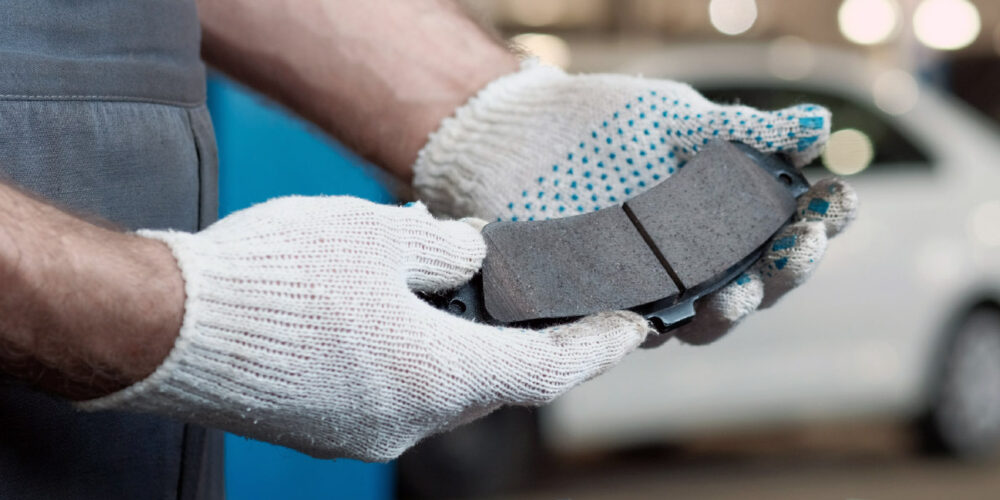Since 2004, Volkswagen and Audi have released several car models that are equipped with the new Electronic Parking Brake (EPB) technology. EPB allows the vehicle operator to engage or disengage the parking brake at the touch of a button. However, the previously simple job of changing the rear brake pads has become a more complex task, requiring a dealer-level scan tool.
Each rear caliper has an independent motor that actuates the caliper. A scan tool must be used to instruct the car to open or close the caliper for repair.
Consider the following scenario:
A 2005 Audi A6 has just entered your shop and the owner is complaining of a brake noise. You raise the car and remove the wheels. You determine that the rear pads need to be replaced, but discover you cannot get the caliper off the rotor. Before your frustrated tech grabs his BH (see Fig. 1), use the following procedures with a factory-level scan tool: 
Open the rear calipers:
(Based on 2005 Audi A6 with EPB)
1. Cycle the EPB on and off using the switch. Make sure it is disengaged before continuing.
2. Select the control module address [53 – Parking brake].
3. Select [Basic Settings-04] and use Group 007. Listen carefully and you will hear the EPB open wide. When it is done opening, Basic Settings at the top of the screen will show “ON.”
4. Exit control module. Click [Done, Go Back], [Close Controller, Go Back].
5. Replace the brake pads and/or perform needed repairs. After completing the mechanical repairs, you will need to electronically close the calipers.
Close the rear calipers:
1. Select control module address [53 – Parking brake]. (See Fig. 2)
2. Select [Basic Settings-04] and use Group 006. 
3. Listen carefully and you will hear the EPB closing. When it is done closing, Basic Settings at the top of the screen will show “ON.”
4. Click [Done, Go Back] then [Basic Settings-04] and use Group 010. This performs a function test on the EPB, which will cycle a number of times. When it is done, Basic Settings at the top of the screen will show “ON.”
5. Click [Done, Go Back] then [Fault Codes-02]. If you’ve done everything correctly, the result should be “No Fault Codes found.”
6. Cycle the EPB on and off using the switch to ensure it is working properly.
By Santos Vega, technical specialist, Ross-Tech, LLC













